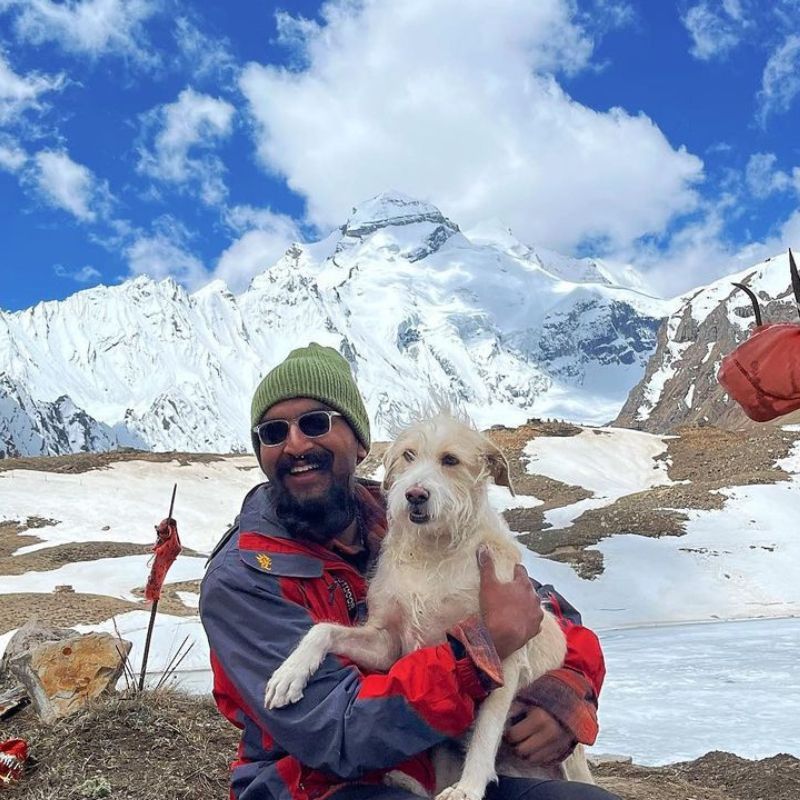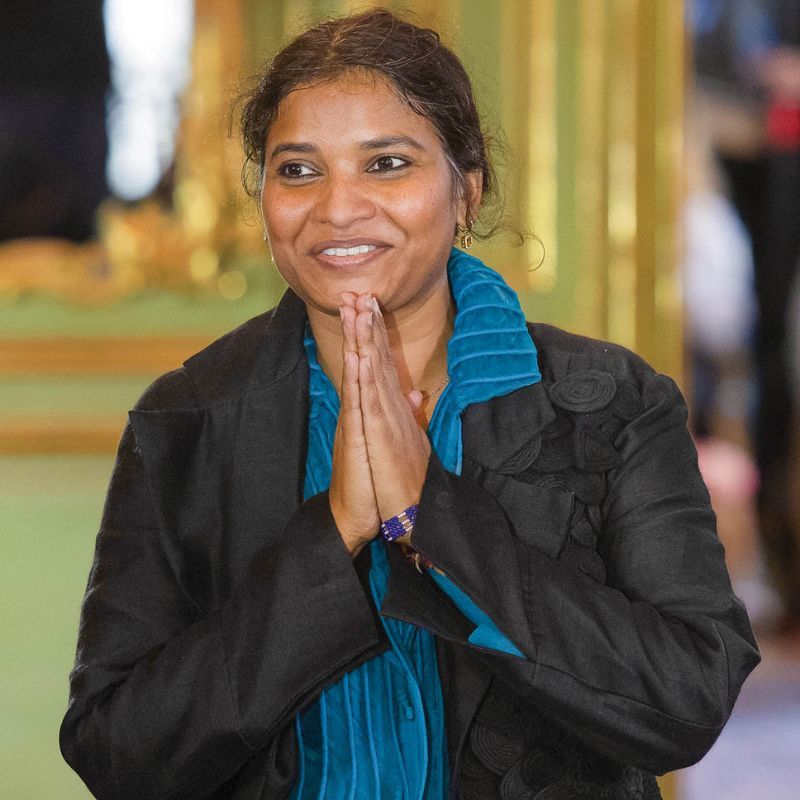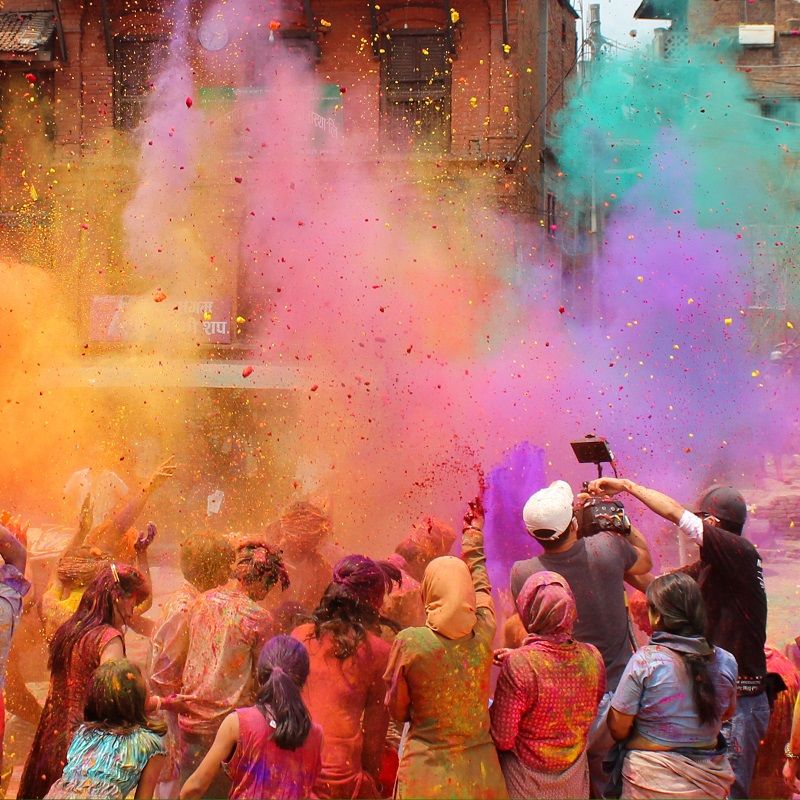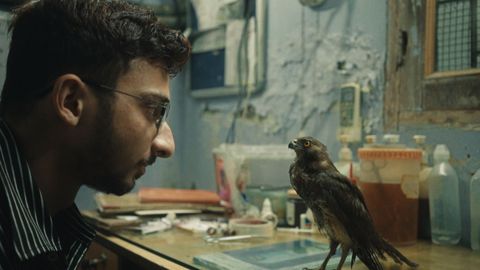
Delhi-based filmmaker Shaunak Sen’s documentary All That Breathes has bagged the prestigious L’OEil d’Or award at the Cannes Film Festival 2022. Also called The Golden Eye, it is the biggest documentary award at the festival. Sen speaks to T+L India & South Asia about the process of making the documentary, his style and inspirations, and the two brothers at the heart of the story. By Sumeet Keswani
All That Breathes is a creative documentary film about many things: the capital city of Delhi and its apocalyptic air in winter, the urban wildlife that improvises to survive in its human-dominated environment, the raptors that glide in the skies and sometimes fall from them, and a couple of brothers who have dedicated their lives to saving the birds of prey. The camera, which is a well-trained fly on the wall, captures the everyday life and struggles of Wildlife Rescue, the NGO founded in a basement nearly two decades ago by the two brothers, Mohammad Saud and Nadeem Shehzad, who aspire to build a bird hospital for their beloved creatures. Earlier this year, All That Breathes became the first Indian film to win the World Cinema Grand Jury Prize at the Sundance International Film Festival. Now, it’s all set to premiere at the Cannes Film Festival 2022.

Excerpts from an interview with director Shaunak Sen:
T+L India: You’ve travelled quite a bit since you made your last documentary Cities of Sleep—a documentary on the business of sleep in the capital. In All That Breathes, you focus on wild creatures living in Delhi and an NGO dedicated to saving them. What makes you keep Delhi at the centre of all your narratives?
Shaunak Sen: My primary interest has been to disassemble a city through different lenses. For instance, Cities of Sleep was about looking at the city through the prism of sleep, or you can say, through horizontality. This film looks at it through the prism of birds, or the vertical axis. That’s how I began thinking about the film.
In fact, before meeting the characters or having a concrete grip on whose story I would tell, the film first came to me as a vague visual texture. For all of us who have been living in Delhi for the last few years, there’s a visual sensorium of greyness, a texture of hazy monotone grey skies, the air hanging heavy around us, and this feeling that we’re constantly breathing something noxious. As if the environment ensconcing us is slowly becoming hostile to our sense of well-being and future. I’d stop at traffic signals and look up and see many cheel, or black kites, gliding slowly through these grey skies that laminate the city. It’s become a classic, dystopian, almost cliché, image of the city. That’s how the film began.
Then, we started looking for people who had a profound relationship with the birds or the sky. That’s when we came upon the brothers. The city is the epistemic wallpaper of the brothers’ lives and a character in the film. The whole directorial team is deeply embedded in the city’s local milieu—its vernacular and cultures. We’re all intimately aware of the city and wouldn’t be able to tell such a subterranean story in any other city. So, Delhi is formative and omnipresent in it—and every film I’ve made so far.
T+L India: How did you find Nadeem and Saud? Were there any other subjects you considered?
Shaunak Sen: I encountered the brothers in different news reports. But all the reports I read were celebratory about the work they did, and I was certain that I didn’t want to make a sweet film about nice people doing nice things. And after meeting the brothers, I felt even more strongly that these people have tremendous depth and nuance. And I wanted to get a broader snapshot of the contemporary with them as the primary vectors. Initially, we thought there’d be two strands to the film. We even shot a secondary strand with an exterminator dealing with termites. But the brothers’ story rose to such powerful prominence that the other story could not muscle its way into the film.
T+L India: Have the brothers’ lives changed after the film?
Shaunak Sen: They’re thrilled that their story is getting such visibility. A lot of press limelight is on them. This also means that there are more people ready to support their bird hospital.

T+L India: The choice of ending scene seemed very interesting to me. The film ends in a frozen video call—something we’ve all experienced abundantly in the last two years. But for the brothers, who have shared a strong bond throughout their lives, it’s an interesting change of scene—this scratchy, long-distance connection. What were you trying to convey as a filmmaker?
Shaunak Sen: These two brothers have soldiered on, indefatigably, in the face of complete ecological devastation. They have the front-row seats to the apocalypse—birds are literally falling out of the sky. But they have a wry, unsentimental resilience—that’s what attracted me to them. Yet, one of the brothers, Nadeem, had a kernel of dissatisfaction. He wanted more—read more, travel more, etc.—and therefore wanted a taste of another life while also being completely drawn in here. I wanted to excavate that complexity.
So, when he finally travels abroad [for a two-month course in bird rescue] and sees a red kite, which is a cousin of the black kite, he’s reminded of his life in Delhi and calls his brother. The moment where he’s saying, “Can you hear me? Can you hear me?”, is a bittersweet, poignant end—of him taking flight, albeit briefly, and trying to reconnect with Saud.
T+L India: The film tackles many different topics—from urban wildlife to pollution, social commentary, family dynamics, etc. How do you define this film’s genre in a line?
Shaunak Sen: I abhor that task. I just call it a creative documentary about the ecological and social situation. I try speaking about it in the vaguest platitudes: “It’s about the relationship between two men and a bird,” “A love story between two men and a bird species… about two men and the skies.” I speak about it in these floozy, vague, annoying terms, because I don’t have a better catchphrase for it. Some films are very easy to logline, like Cities of Sleep. This was phenomenally tough to logline.
T+L India: You train the camera on the family in some of their most tender moments. How did you manage that without them being conscious of your presence?
Shaunak Sen: In any documentary, the first month is less about the visual object or thematic imperatives. It’s largely the labour of eliciting trust, building a friendship; an open, trusting conversation where you get embedded as the wallpaper of their lives. The joke in our crew is that until you get a yawn on camera, none of the material before that is useful.
Initially, the camera is an obtrusive object—people are conscious of what sense of self they’re projecting. That leads to characters behaving instead of being. The aspiration was to capture the everyday fabric of their lives. And thankfully, their life has a cyclical pattern. On most days, we would go and say our codeword, “Aaj hum deewar hain.” (“We are the wall today.”) And the brothers would know that they had to go about their work as if we weren’t present. It’s the grammar of the film, and it was the grammar of the process. Also, if you shoot someone for nearly three years, friendships develop densely. After a point, the subject knows that he’s in good hands, that I’m deeply invested in telling his story with empathy.
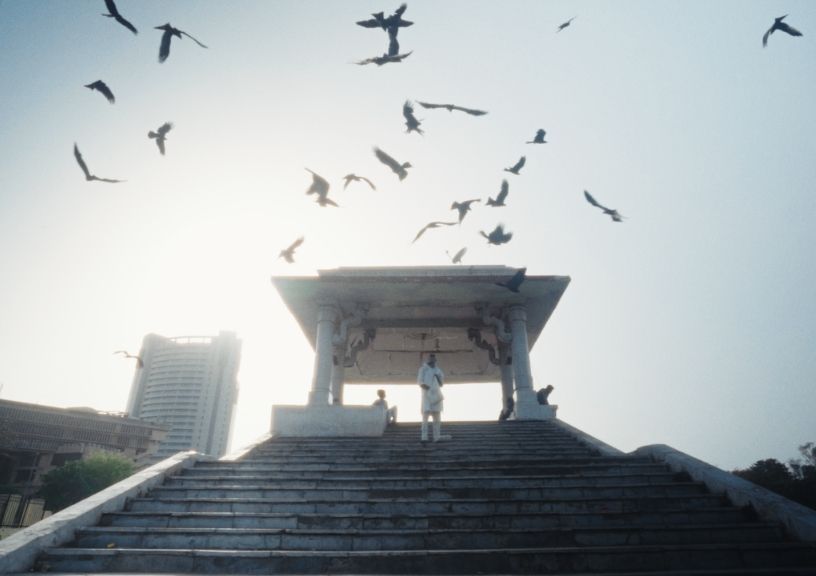
T+L India: Many of the panning shots start with a regular Delhi scene, like a garbage pile, and end with a surprise wildlife denizen, like a turtle. Did a certain kind of film, say a nature or wildlife documentary, inspire the cinematography?
Shaunak Sen: It was definitely not inspired by nature docs because we wanted to move away from the usual grammar. This style began with the German cinematographer Ben Bernhard, who came down to shoot a long schedule with us. He has shot [some] films for Viktor Kosakovskiy, like Aquarela. I was a huge fan of his work, and we started working on themes like coexistence and simultaneity—of different stakes of life jostling cheek-by-jowl in the city.
Often the assumption is that nature is something that’s occurring far off in the jungles, but we know that the urban [landscape] is the primary driving force leveraging behavioural and accelerated evolution change. The most exciting science work happening now is pointing to urban ecologies and how animals are not just passive receivers of urban change but also adjusting, improvising, and reacting to it. And I like this approach that invests non-human life with agency and spontaneous improvisatory spirit. We wanted to find a film grammar that showed the duality and simultaneity through a cinematic device; that’s where we devised the languid pan, or the tilt, or the focus shift. Later, the Indian cinematographer Riju Das came and evolved it even further.
So, when you see a turtle clambering up through garbage and looking at traffic whizzing past, what you’re seeing in that one slow shot is a collision of two temporal intensities that are counterpoised. Similarly, we decided that we wouldn’t cut in the middle, and show uncut vignettes of non-human life that interfaces with the urban fabric. And also the cinematic reveal, where one element gets revealed at the end of the shot. It’s a form that Ben and Riju developed over time.
T+L India: What is your inspiration behind this filmmaking style?
Shaunak Sen: I have been interested in the creative documentary form. None of us are skilled in wildlife or nature documentaries, nor was this the ambition. That’s why you don’t see a super-telephoto-lens shot of the eye of the kite while it flies in the sky. You see it like you’d see it through the naked eye. In terms of creative documentary practitioners, three names come to mind: Viktor Kosakovskiy, Gianfranco Rosi, and Roberto Minervini. I wanted to use fiction or narrative tools to shoot a documentary, so a number of people have come up to me and said they felt like they were watching a fiction film!
Related: Doing Cannes The Celeb Way : Where To Shop, Eat & Play




